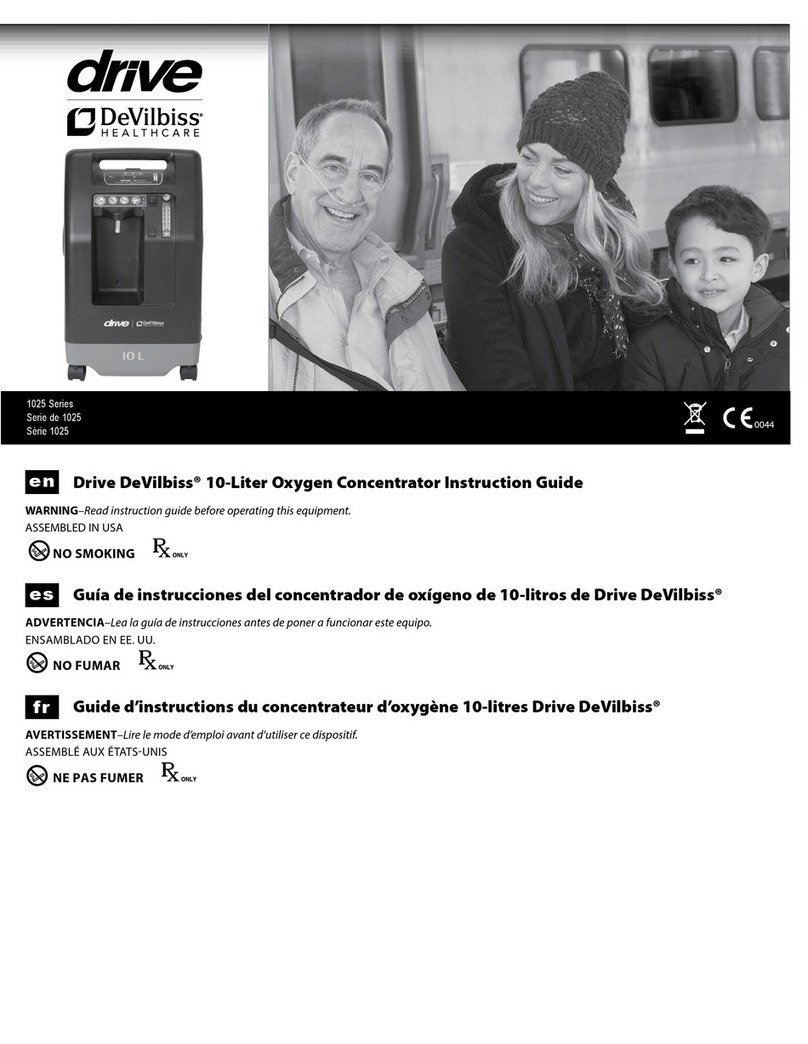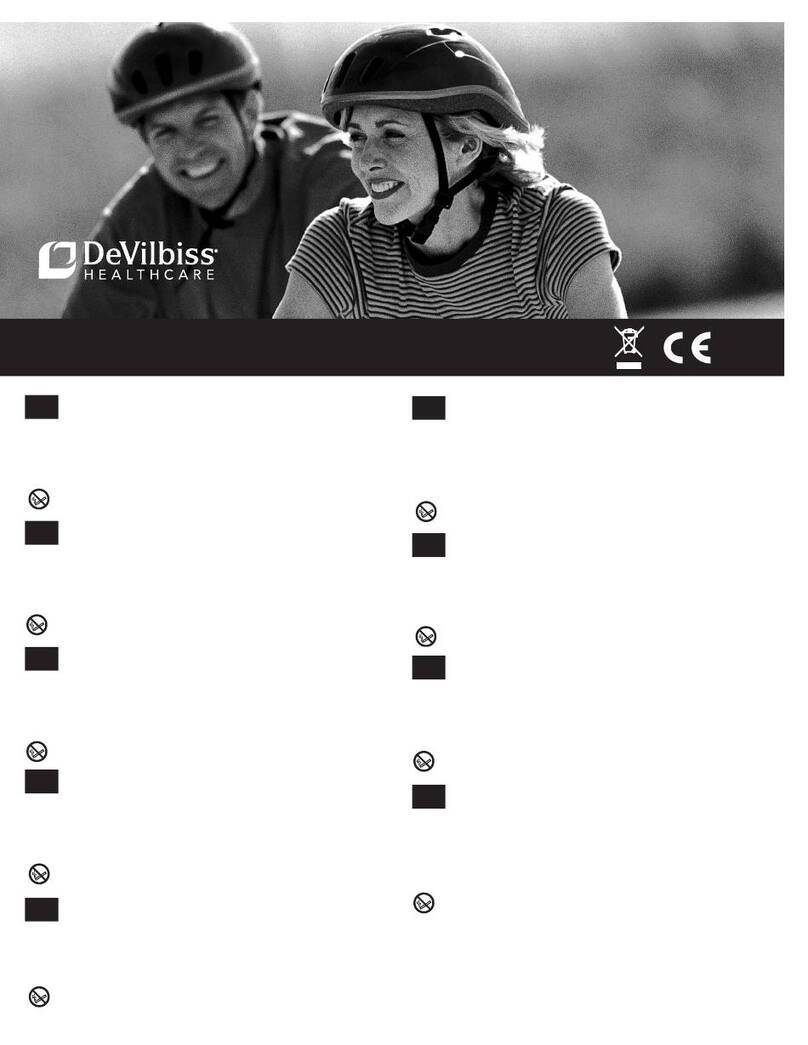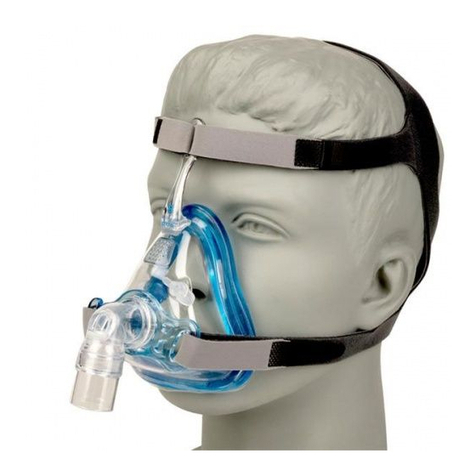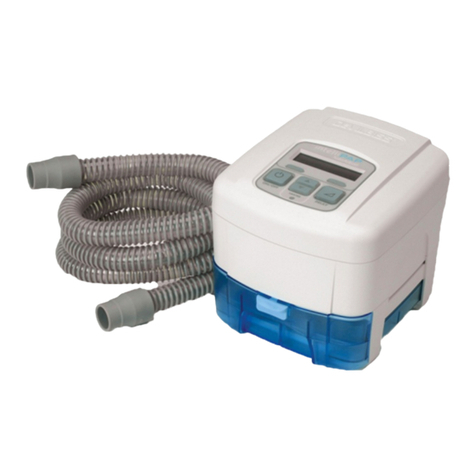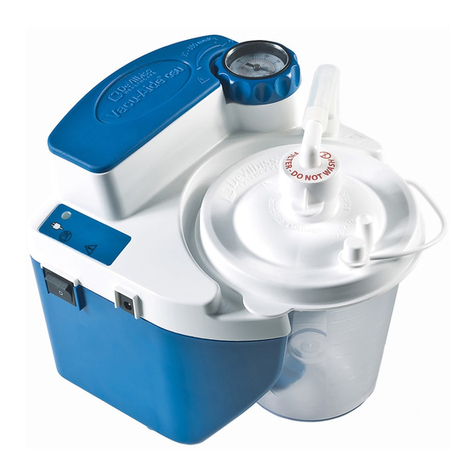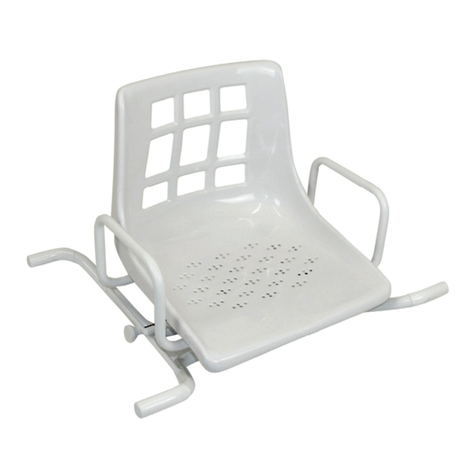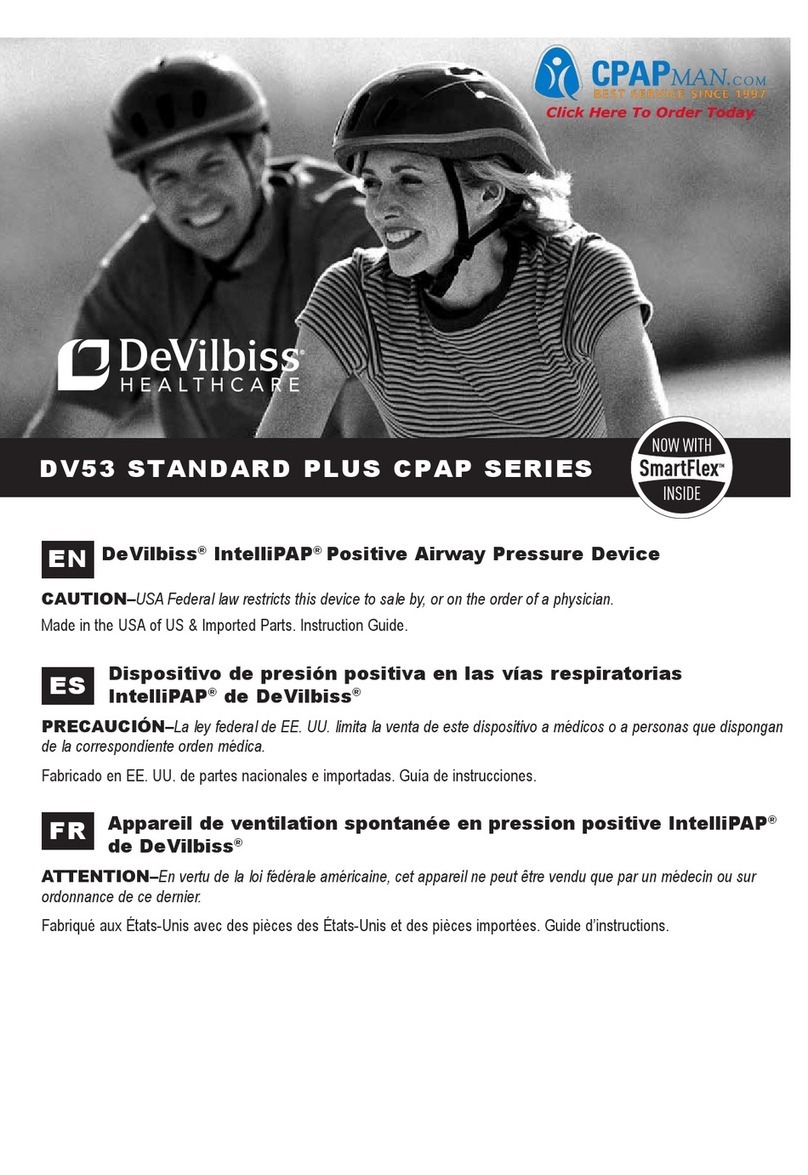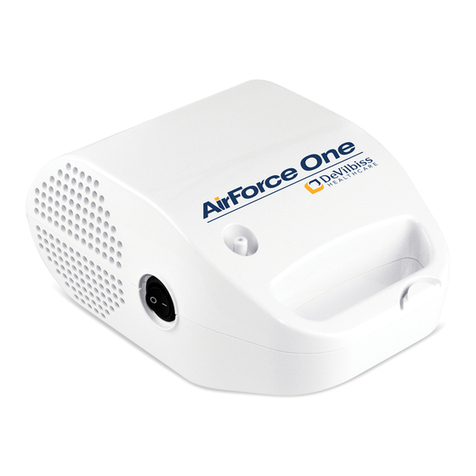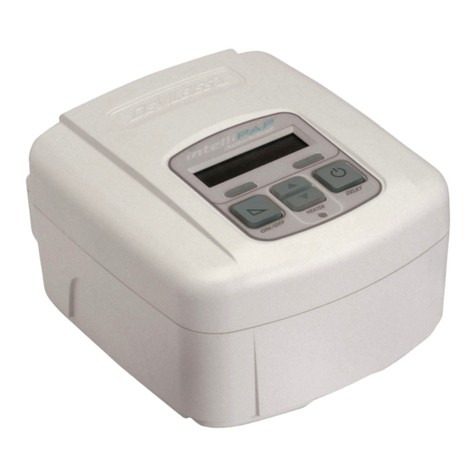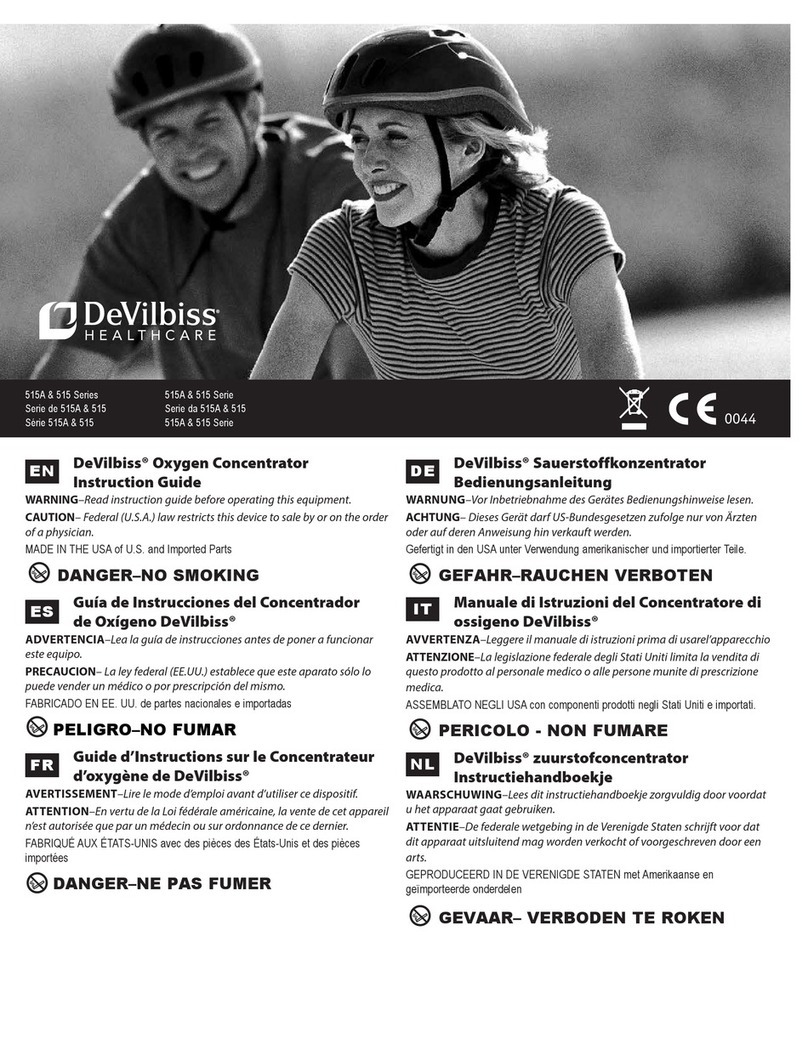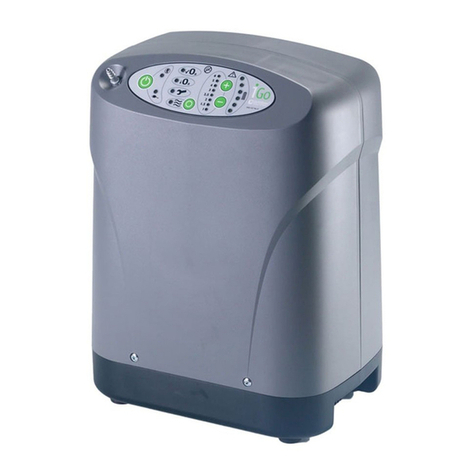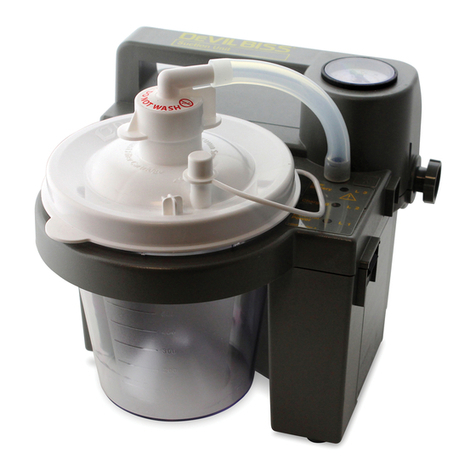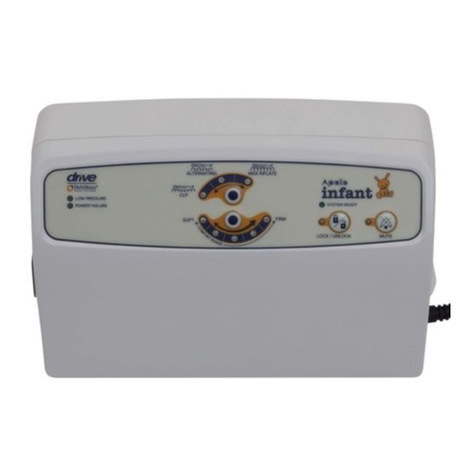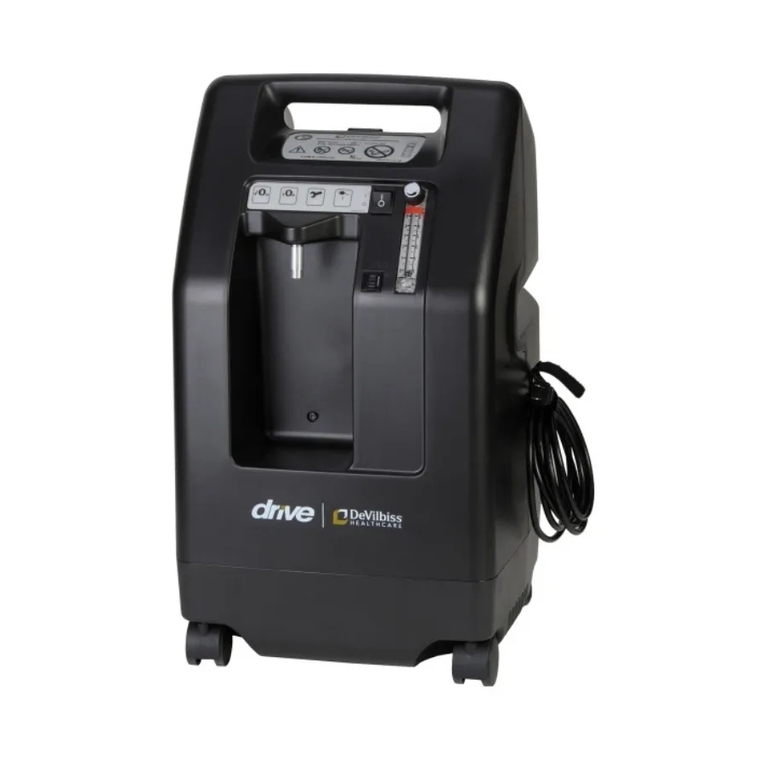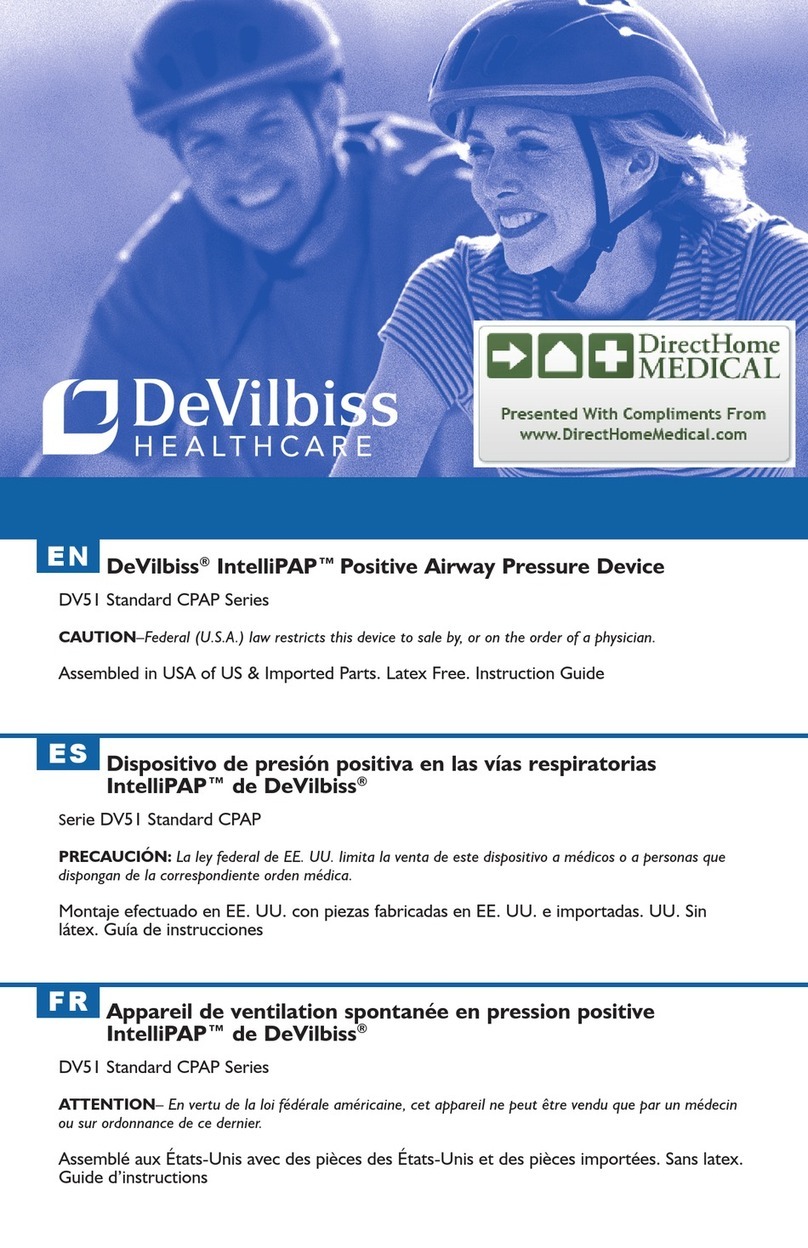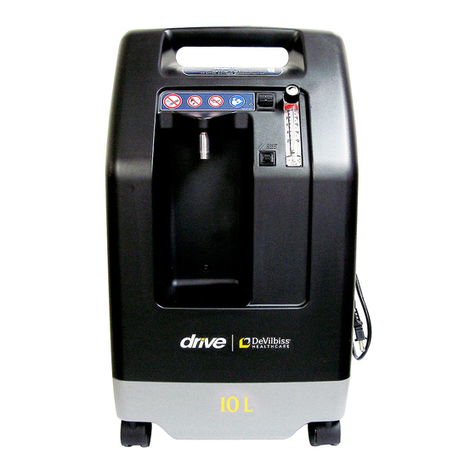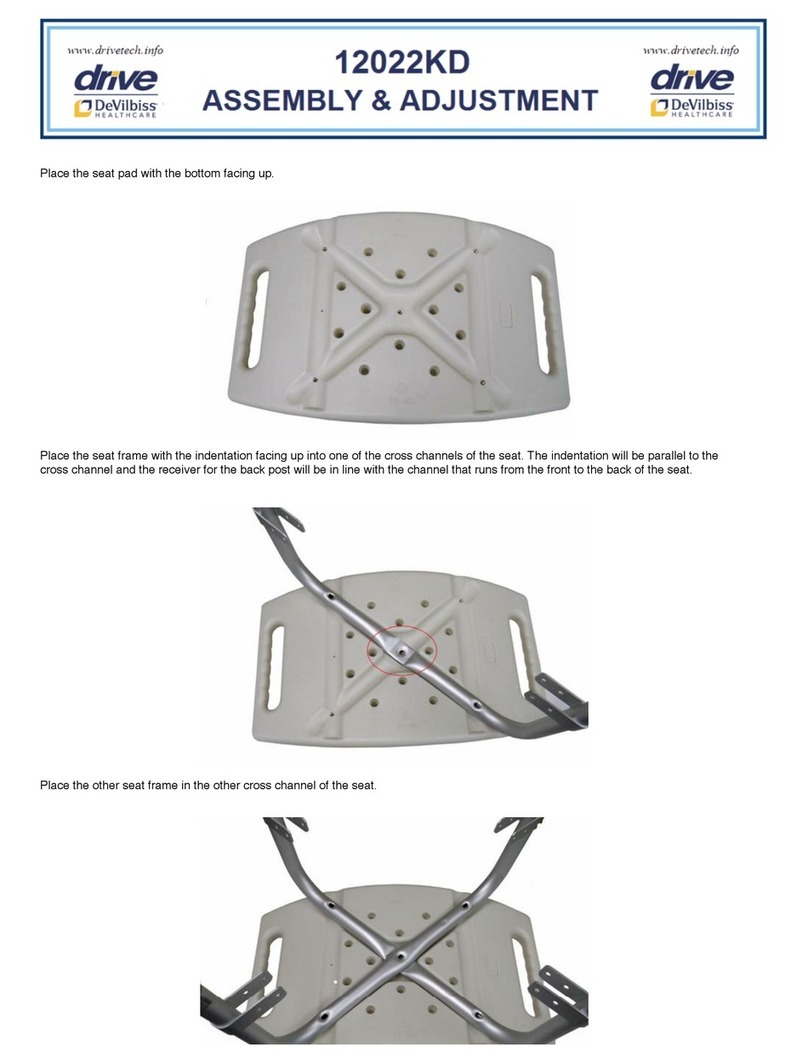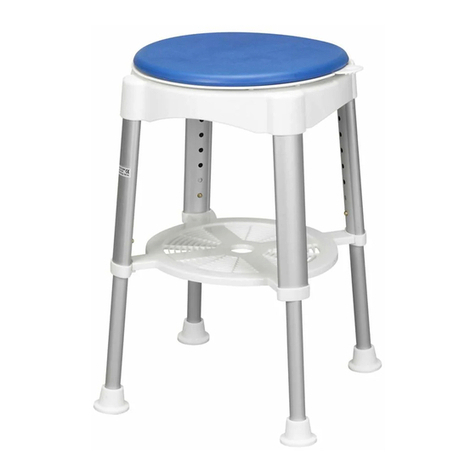
LT-2156
14
CLEANING INSTRUCTIONS
Suction Unit (single-patient use)
CAUTION– Do not submerge in water as this will result in
damage to the vacuum pump.
NOTE– Do not use any cleaners or disinfectants that contain
ammonia, benzene and/or acetone to clean the unit.
1. Turn unit “off” and allow vacuum to drop.
2. Disconnect from power source.
3. Wipe the housing with a clean cloth and any commercial
(bacterial-germicidal) disinfectant.
Carrying Case (single-patient use)
1. Wipe with clean cloth dampened with detergent or
disinfectant.
Suction Unit (multi-patient use)
Device Cleaning and Disinfection When There is a
Patient Change
DeVilbiss Healthcare recommends that at least the following
procedures be carried out by the manufacturer or a qualied
third party between uses by different patients.
NOTE– When the device is used as per instructions under
normal conditions the interior of the device is protected from
exposure to pathogens by the in-line lter on the collection
container, hence no disinfection of internal components is
necessary.
NOTE– If the device is used without an in-line lter then the
interior of the device may be exposed to pathogens and the
device cannot be disinfected.
NOTE– If the following described complete processing of the
device by an appropriately trained individual is not possible, the
device should not be used by another patient.
1. Use disinfectants safely. Always read the label and product
information before use.
2. Always wear personal protective equipment when
performing this procedure. Use suitable gloves and safety
glasses. Cover exposed skin on arms to prevent accidental
contact with bleach solution that has been applied to the
device. Perform disinfection in a well-ventilated area.
3. Dispose of all accessories that are not suitable for reuse.
This includes but may not be limited to the collection
container, lter, tubing and carrying case.
4. With the power switch in the “Off” position, disconnect the
device from all external power sources.
5. Visually inspect the device for any damage, missing parts,
etc.
6. Clean the exterior of the device with a clean lint-free cloth.
Heavy soil should be removed with a clean lint-free cloth
dampened with water. A soft bristled brush dampened with
water can be used to remove stubborn soil. Dry the device
using a clean lint-free cloth if water was used to remove soil.
7. Use 5.25% chlorine bleach (Clorox Regular Liquid Bleach or
equivalent). Mix one (1) part bleach with four (4) parts water
in an appropriate clean container. This ratio produces a one
(1) part bleach to ve (5) total parts solution (1:5). The total
volume (amount) of solution required is determined by the
number of devices in need of disinfection. NOTE– An
alternate suitable commercial (bacterial-germicidal)
disinfectant that meets the requirements listed in the NOTE
below and is used as per the disinfectant manufacturer’s
recommended dilution rates and instructions may also be
used.
CAUTION– Do not submerge the device in water as this will
result in damage to the vacuum pump.
NOTE– Do not use any cleaners or disinfectants that contain
ammonia, benzene and/or acetone to clean the device.
8. Apply the bleach solution in an even manner to the
enclosure and power cord using a clean lint-free cloth. The
cloth should be dampened only and not dripping of solution.
Do not use a spray bottle to apply the solution. Do not
saturate the device with the solution. Avoid over-saturating
the enclosure seams so that no solution residue builds up in
these areas.
9. Exposure time of the disinfectant solution should be 10
minutes minimum to 15 minutes maximum.
10. After the recommended exposure time, all exterior surfaces
of the device are to be wiped with a clean lint-free cloth
dampened with drinking quality water no warmer than room
temperature. Dry the device with a dry, clean lint-free cloth.
This is to remove residue that may stain or leave a lm on
the device, especially after repeated disinfections.




















